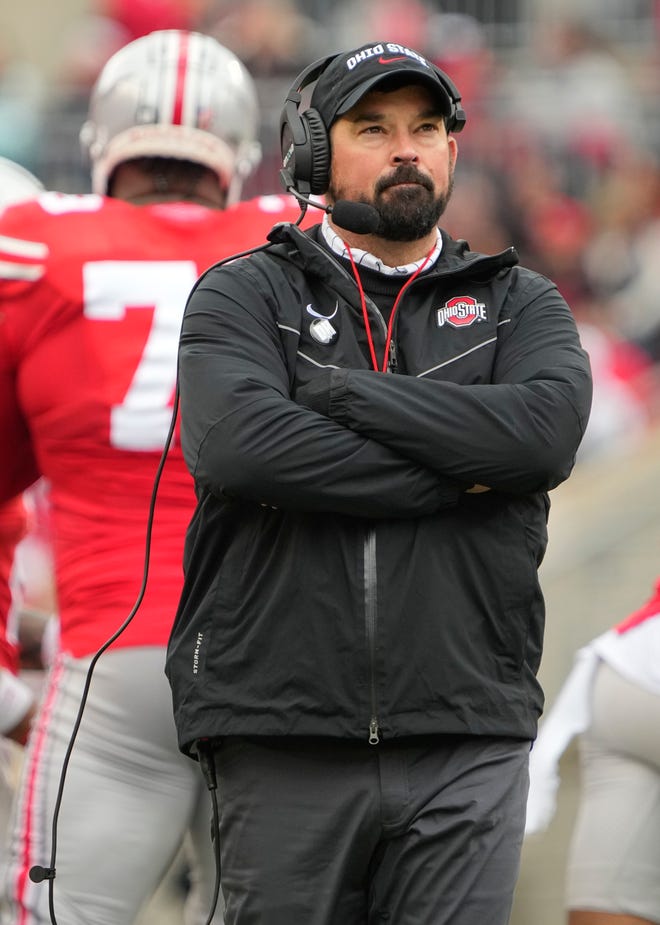## The Unexpected Departure: Ryan Day’s Exit from Ohio State
The news sent shockwaves through the college football world: Ryan Day, the seemingly untouchable head coach of the Ohio State Buckeyes, was leaving the program. While the official statement cited a contract termination, the underlying reasons for Day’s sudden departure are far more complex and multifaceted, demanding a deeper dive beyond the terse press release. This analysis explores potential factors contributing to this seismic shift in the Ohio State football landscape.
**The Contractual Nuances:** While the exact terms of Day’s contract termination remain undisclosed, the very act of mutual agreement to part ways suggests more than a simple dissatisfaction. A buyout clause, undoubtedly substantial, points to a negotiated exit, implying a mutual understanding that continuing the relationship was no longer in the best interests of either party. This suggests a breakdown in trust, a fundamental divergence of vision, or potentially even external pressures influencing the decision. The lack of transparency around the specifics only fuels speculation.
**On-Field Performance & Expectations:** While Ohio State consistently remained a top-tier program under Day, the program’s recent performance fell short of the exceedingly high expectations associated with the Buckeyes. Repeated failures to reach the College Football Playoff (CFP) National Championship game, despite boasting some of the most talented rosters in the nation, likely weighed heavily on the administration. While reaching the CFP is a significant accomplishment, the ultimate goal at Ohio State is to win it all, a feat that eluded Day despite his consistent recruiting success. This perceived shortfall, compounded by losses to rivals like Michigan, may have fueled internal pressure to seek a change in leadership.
**Recruiting Challenges & Roster Management:** While Day enjoyed remarkable recruiting success, attracting elite talent consistently, the translation of that talent onto the field wasn’t always seamless. Questions surrounding roster management and the development of players emerged, prompting discussions about whether the coaching staff was effectively maximizing the potential of its highly-touted recruits. The consistent presence of highly-ranked players on the bench, combined with the occasional underperformance of star recruits, raised concerns about coaching strategies and player development philosophies.
**Philosophical Differences & Administrative Friction:** The relationship between a head coach and the athletic director is crucial for a program’s success. Speculation abounds regarding potential friction between Day and Ohio State’s athletic director, Gene Smith. Differences in philosophy regarding recruiting strategies, player development, or even the long-term vision for the program could have created an untenable situation. Such internal conflicts, if present, could have subtly eroded trust and contributed to the eventual decision to separate. The silence from both parties on these potential internal dynamics only adds to the mystery.
**External Opportunities & Personal Considerations:** While less probable given his apparent success at Ohio State, the possibility of a lucrative offer from another program, potentially in the NFL, can’t be entirely ruled out. Day’s considerable coaching experience and reputation would make him an attractive candidate for NFL teams looking for a fresh perspective and proven leadership. Alternatively, personal reasons, unforeseen circumstances, or a desire for a change in environment could also have played a significant role in his decision, though these are purely speculative at this point.
**The Aftermath & Future Implications:** Day’s departure leaves Ohio State facing a pivotal moment in its football history. The search for his successor will be intense, with numerous high-profile coaches likely vying for the position. The university will undoubtedly seek a candidate who can not only maintain the program’s high standard of recruiting but also consistently deliver on the field, culminating in national championships. The long-term impact on player morale, recruiting efforts, and the overall program culture will depend heavily on the leadership transition and the direction the athletic department chooses to take.
In conclusion, Ryan Day’s exit from Ohio State represents a complex culmination of factors, extending beyond simple on-field results. The absence of clear and detailed explanation from both parties only fuels the speculation and enhances the dramatic nature of this unexpected development. The coming months will reveal the true reasons behind this significant shift, and the long-term consequences will be felt throughout the college football landscape for years to come. The Ohio State Buckeyes, for the first time in a while, find themselves facing an uncertain future, and the nation waits with bated breath to see who steps up to fill the enormous void left by Ryan Day.

